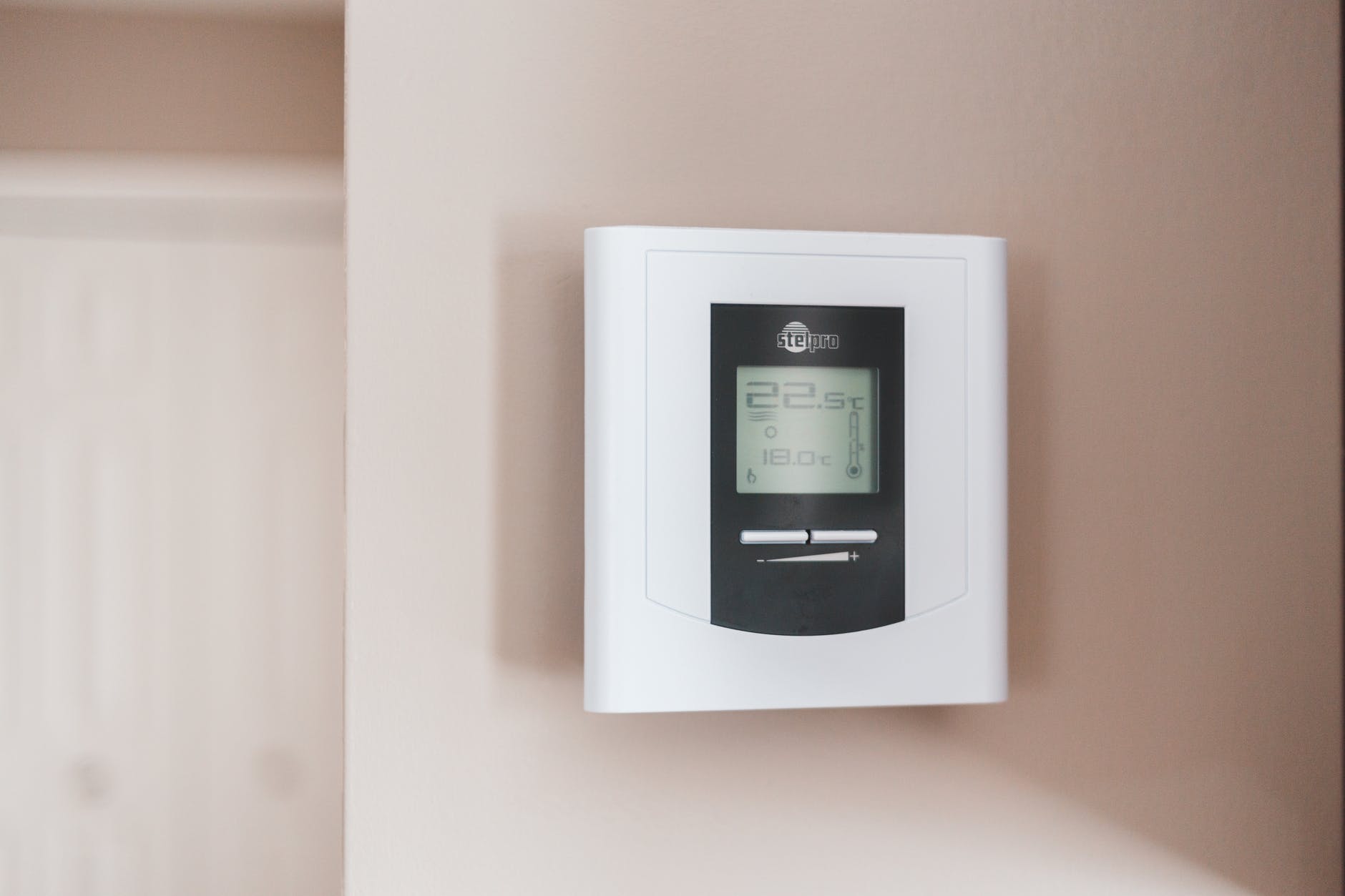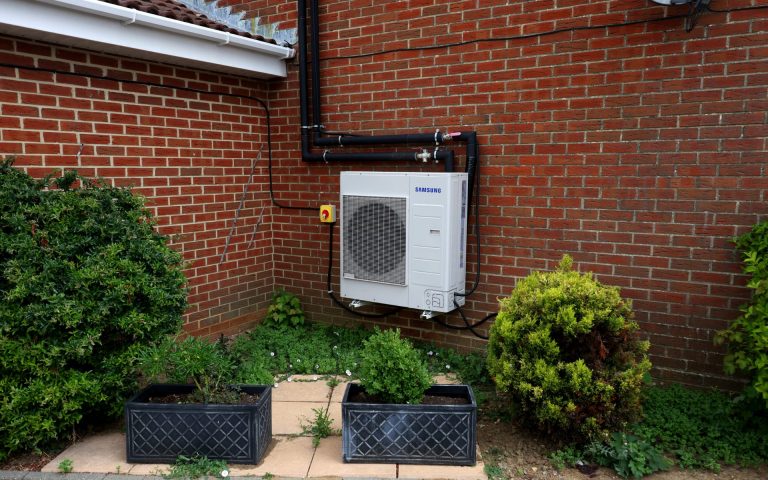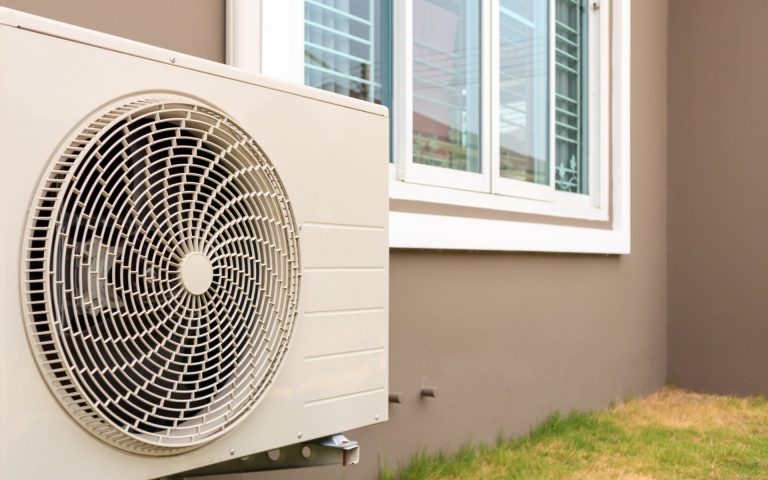We get quite a few calls about programmable thermostats and how to make them work best for your home heating needs.
As this is such a frequently asked question from our customers, we thought we’d write this handy guide to help you get the most out of your programmable thermostat.
What is a Programmable Thermostat?
First things first – Let’s talk about what a programmable thermostat actually is.
Many homes will now have a programmable thermostat. These work just like an old fashioned timer, with a dial room thermostat all rolled into one. In simple terms, it is a programmer and a room thermostat.
The programmer part allows you to set ‘On’ and ‘Off’ time periods for your heating to suit your household needs. The room thermostat senses the air temperature, switching the heating on when it falls below the set temperature and turning it off when it reaches a given set temperature.
How Does a Programmable Thermostat Work?
The programmer part allows you to not only set a time for the heating to come on, but also what temperature to heat up to.
For example, you might set it for 6am so that when you get out of bed in the morning, the house is already warming up! Not only will the heating automatically come on at 6am, it will also heat up to the programmed temperature before switching off again.
Not only that, but you can set a different temperature for different times of day. So you might want it to heat up to a maximum temperature first thing in the morning, then to a slightly lower temperature around lunchtime to keep things it from dropping too low, and then a bit higher again in the evening when the temperature drops outside.
And once programmed, it does all of this without you having to alter it manually!
The most common problem that our customers have is the concept of ‘setback’. Below we are going to cover this in more detail (see ‘What are the on and off temperatures…’ section) but the main thing to remember is that your boiler does not completely switch off when the heating isn’t on. You will programme it to have an ‘On’ temperature (the temperature you would like it to be when the house is warmest) and an ‘Off’ temperature (the lowest temperature, which the programmer will maintain the house at).
If you are wondering why your boiler is firing up in the middle of the night, it is because the temperature has dropped below the lowest point set (the ‘Off’ temperature). Your boiler is never off, and your heating is never really off – It maintains the set temperature in your home.
The most important thing to remember is do not start poking buttons on your boiler when this happens! You could end up switching off your boiler completely, resulting in no heating at all and possibly no hot water. It could then be tricky to get it to come back on.
Everything that you need to do to control the heating within your home is done using the programmable thermostat. Often, when customers change from an older controller or boiler combination, they will be used to turning the heating up and down on the boiler itself – Especially if they have only had a programmer and no room thermostat. This often results in customers pressing buttons on the boiler and turning the heating off completely, resulting in not being able to turn it back on.
So, if you have a programmable thermostat, only use this to control the heating in your home. Don’t press buttons on the boiler itself, and always follow the manufacturer’s instructions. When you have a boiler and programmable thermostat installed, ask your installer to show you how everything works so you are confident with the controls.
What are the ‘On’ and ‘Off’ Temperatures on a Programmable Thermostat?
When you set a programmable room thermostat, you need to set an ‘On’ temperature and an ‘Off’ temperature.
The ‘On’ temperature is the lowest temperature you are comfortable living in at the times of the day you want your house to be warm. When your home reaches this temperature, the heating will automatically turn off. When the home temperature falls below this temperature the heating will come back on
The ‘Off’ temperature is the temperature your home will be heated to during times you are not at home or asleep or have just decided not to have the heating on. If you set this to say 14 degrees c your home temperature will not drop below 14 degrees. If it is very cold overnight the heating might come on to maintain this temperature, but it is perfectly normal for this to happen.
It never really goes completely off. The heating will ‘set back’ to reduce the temperature if needed, or stop the temperature going below what has been set.
The idea with this is that the fabric of your home (such as walls, floor and furniture) will hold and maintain the heat. By preventing the temperature from dropping too low in the fabric of your home, you are ensuring the boiler doesn’t have to work so hard to heat it back up again. Heating your home in this way is more energy efficient than switching the heating on and off again at different times.
What Temperature Should I Set on my Programmable Thermostat?
There is no ‘one size fits all’ when it comes to heating your home – It’s a very personal choice and everyone is different!
The best way to set the temperature on your programmable thermostat is to find what is comfortable for you and your home by starting at the lowest temperature.
Programme the ‘On’ temperature to the lowest temperature you think could be comfortable. 18 degrees C is a good place to start if you’re not sure.
Leave it alone for a day and see how your home feels. If you feel cold, or colder at certain times of day, then change the temperature by one degree and try it again. Keep going until you reach a temperature that feels comfortable.
Remember – You can programme the thermostat so that it has a different ‘On’ temperature at different times of day. If 18 degrees felt warm enough during the day, but you felt a bit cold first thing in the morning and in the evening, then change the temperature by one degree just for those colder times of day.
Most of your customers find that 21 degrees is a comfortable temperature for their home, but find out what suits you. If you’re comfortable at a lower temperature, you’ll be saving energy! Any adjustments made higher than what’s needed isn’t just a waste of energy, but results in costlier bills too.
We would usually advise the ‘Off’ temperature to be set to around 14 degrees. This means that if the area around the thermostat drops below this, the heating will come on to try to maintain this temperature.
For this reason the heating is never completely ‘OFF’ in the old fashioned sense. You might think this sounds costly, especially as it’s not uncommon for the heating to run in the summer if we have a particular dull or cold day. But as we said above, it’s actually more energy efficient to maintain a certain temperature than having to heat your home from stone cold every time the heating comes on.
Consider the Placement of your Programmable Thermostat
When you are setting the temperatures for your thermostat, bear in mind where it is placed. Remember the thermostat is sensing the temperature of the air around it, so be mindful of where it is.
Is the programmable thermostat near a door where there is likely to be a draught? If it’s placed by your front door then it could cause the heating to come on every time you answer the door due to the sudden drop in temperature.
If it’s placed close to a radiator or in a room with a log burner, then it’s going to detect warmer temperatures than perhaps other areas of your home, so maybe not trigger the heating to come on when needed.
Consider these things when setting the temperature and lower/ increase it accordingly.
Do not cover a programmable thermostat with curtains or furniture. To work effectively, they need a free flow of air around them. Without this, they cannot detect the temperature accurately, and may cause the heating to come on or turn off at times that don’t meet your needs.
Can I Use a Programmable Thermostat to Control the Temperature in Different Rooms?
If your heating system consists of a boiler with radiators, then usually you will only have one Programmable Thermostat in your home to control the heat of the whole house. This is why placement is an important factor to consider.
If you would like to be able to control the temperature in individual rooms, then you would need to install Thermostatic Radiator Valves (TRV’s). These are placed on individual radiators, and thus enable you to control the temperature of each one.
With TRV’s you can make sure that even the coldest rooms in your home are heated to a more comfortable temperature.
If you don’t have TRV’s then you will need to try and set the programmable thermostat to a temperature that is comfortable for the entire house.
How Can I Use a Programmable Thermostat to Save Energy?
Programmable thermostats can save you energy and money on your bills if used in a certain way.
The lower the temperature your rooms are being controlled at, the more energy you will save. As a general rule of thumb, for every 1 degree you turn down your thermostat, you’ll be using 1% less energy.
One way to reduce energy and save money on your heating bills is to turn your heating down by 8 degrees for 8 hours, which works well overnight while you are asleep.
Likewise, if you know that you will be out all day at work, then there’s no need to heat your home higher than the minimum temperature to keep it ticking over.
Maintaining the heat of your home at a certain temperature and not letting it drop below actually helps to save energy, as it uses less energy for your boiler to heat your home a little bit, than heating it up from stone cold.
Programmable Thermostat FAQ’s
There are a few questions that we get asked all the time, so here they are plus the answers you need to know.
- ‘I turn my programmable thermostat up higher but it doesn’t heat up any faster – What’s wrong?’
Turning your programmable thermostat up higher won’t make your house heat up quicker – It will just keep the heating on until it reaches that given temperature.
How fast your home heats up depends on the size of your boiler and radiators.
- ‘When I turn my programmable thermostat down, the room takes ages to cool back down’
Just like above, turning your programmable thermostat down will only affect the temperature your heating system cools down to. If you lower the temperature on your programmable thermostat to manually switch your heating off, it will remain off until the air temperature has reached that lowest point. The better the insulation in your house the longer this will take.
- ‘My heating doesn’t come on at the right times even though I’ve set them’
The time on the programmer must be correct. The first thing to check is that the time on your thermostat is the right time. You can programme it to come on at 6am, but if it isn’t showing the correct time, the heating isn’t going to come on at the time you’re expecting it to. Remember to check the time on your programmable thermostat after the clocks change in October and March.
- ‘Can I override the settings I’ve programmed?’
If you find yourself feeling a bit colder one day than usual, perhaps if you or a family member are ill, but you don’t want to alter everything you’ve programmed, then there should be a way to override it. Always check your manufacturer’s instructions for your heating system for controls like ‘Boost’, ‘Override’ or ‘Advance’.
Most programmers have two ways to override the programs. The first is a temporary override, which is achieved by pressing the + button or the up arrow, or the – button or the down arrow until the set point reaches your desired temperature. This change will only remain active until the next set program change when it will be overridden by what has previously been programmed. This is the way you would increase or decrease the temperature of your home.
Remember that when you are temporarily setting a new temperature, when you let go of the buttons the display will change from the new temperature you have set, to displaying the temperature that it currently is in the room.
If you use the Hand or Man button, you will permanently override anything you have previously set. So again, always check your manufacturer’s instructions if you’re not sure. Many programmable thermostats has +/- buttons or up and down arrows, these can usually be used to increase or decrease the temperature until the next step in the program.
- ‘Can you give me an example of a day’s programmable thermostat schedule?’
As we said at the start of this article, home heating is a very personal choice, but here is an example of how you could consider setting your programmable thermostat during the colder months.
6am – Heating turns on so you are comfortable when you get up out of bed.
(Heating maintains the heat of the house at a lowest temperature throughout the day whilst you are out / at work)
5pm – Heating comes on so that the house feels warm when you get home.
9pm – You might wish to have another boost of heating before you go to bed.
(Heating maintains the heat of the house at a lowest temperature whilst you are asleep)
The main things to consider when you are programming your thermostat are; when you get up, when you leave / come home from work, when the children go to/get home from school, when you go to bed.
- ‘Why has my boiler come on in the middle of the night?’
If your boiler is coming on in the middle of the night, then it means the thermostat is detecting that the temperature has dropped below the lowest set temperature (your ‘On’ temperature setting). This is what it is programmed to do. If you do not want this to happen, then either set a much lower temperature for night time or don’t program a setting for that time period.
Do not press buttons on your boiler if the heating has come on in the middle of the night, you may end up completely switching off your heating and hot water. Only ever use the programmable thermostat to make changes to your heating.
- ‘What does it mean if a battery symbol has appeared on the programmable thermostat?’
This normally means that it’s time to change the batteries. The controllers have a small built in battery that gives enough time for you to change the batteries without having to reprogram the controller. However, if the batteries are taken out for a long time then the controller will need to be reprogrammed after new batteries are installed.






